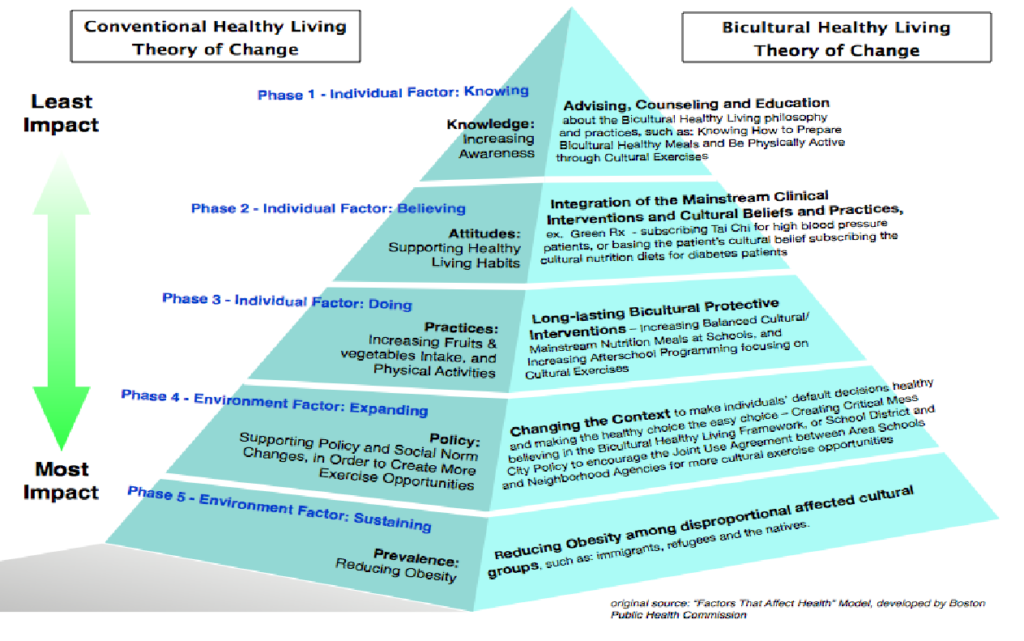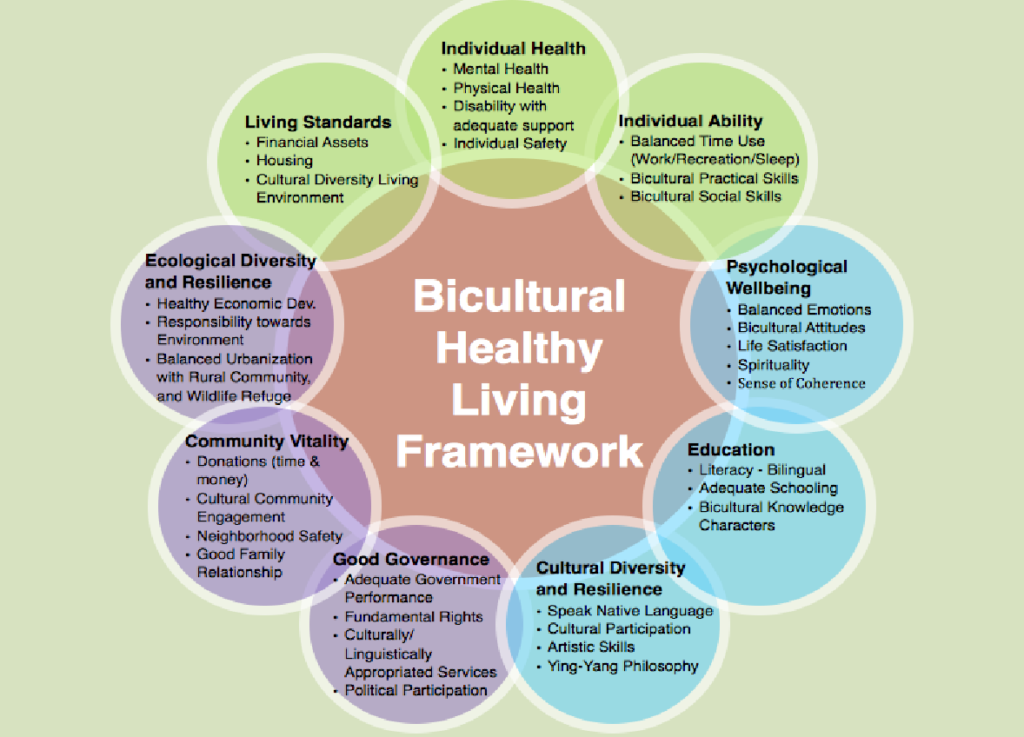What is biculturalism?
Biculturalism was derived from the acculturation literature. Also, it primarily has focused on cultural behaviors, such as media preferences, choice of friends, language use, and the like. Individuals who speak the language of their receiving cultural context and the language of their heritage culture are considered to be bicultural. Also, these individuals read magazines and watch television programs from both cultural backgrounds and have friends from both the heritage and receiving country. For example, a Chinese American may speak ‘Chinglish,’ and they might eat hamburgers with traditional Chinese vegetables. Also, they might mingle in social groups that have American and Chinese friends (Schwartz & Unger, 2010). Biculturalism goes beyond cultural behaviors and includes identifications, values, and cultural practices. It also means that the individual connects to other diverse cultures surrounding them and maintains the connection with their root culture.

Furthermore, biculturalism refers to proficiency and comfort with the culture of the region or country where an individual settled and the person’s heritage culture. For example, this concept applies not only to immigrants who come from other countries but also to children of immigrants who are born and raised in the receiving society. This concept is likely to apply to immigrants children because they are deeply embedded in the heritage culture at home with their families. Moreover, this concept might apply to people living in ethnic enclaves where the heritage culture is maintained over generations and to individuals from visible minority groups. These minority groups may be identified as distinct from the majority of ethnic groups even though their families have been in the receiving society for multiple generations (Schwartz & Unger, 2010). Being a bicultural person has several healthy living benefits.
Biculturalism gives a person various values of healthy living. For instance, the person can enjoy both cultures, which means that the person behaves consistently with two cultural contexts and holds values from receiving cultural streams and identifying with two cultures. For example, as Hmong Americans, rather than just ‘Hmong’ or just ‘American,’ they may also intermix with their traditional Asian values. According to Schwartz & Unger, “The person might also feel an allegiance both to the United States and to China, as well as to the local Chinese community. She might feel Chinese compared to her American peers and feel American compared to her Chinese peers, but she can function effectively in both cultural contexts” (Schwartz & Unger, 2010). The bicultural healthy living concept evolved from biculturalism. This concept supports living healthier within two cultures in which people have adapted to live their lives.
The followings are the several benefits offered by bicultural healthy living:
- Through bicultural healthy living, an individual gets an attitude that supports a broader understanding of multiple levels of cultural identity. Also, there is potential to transcend religious, ethnic, and individual cultural differences that enrich diverse life experiences.
- It promotes a more profound knowledge of universal values like respect, dignity, equality, justice, freedom, protection, pluralism, and kindness.
- It encourages cognitive skills to think creatively, critically, and systematically. These include adopting a multicultural perspective that acknowledges distinct perspectives and an open mind to see and analyze issues from various angles.
- It allows people to understand and support from an array of perspectives because an asset-based approach helps identify the skills and cultural implications of diverse life experiences.
- It emphasizes a group of non-cognitive skills, such as social skills. Social skills include communication skills, networking aptitudes, and interacting with people from different backgrounds, cultures, perspectives, and origins. Moreover, it stresses the importance of resiliency, conflict resolution, and communication skills.
- It highlights a group of behavioral capacities that allow individuals to act collaboratively and responsibly. This permits us to find cross-cultural solutions and strive for the collective good.
References
Schwartz, S. J., & Unger, J. B. (2010). Biculturalism and context: What is biculturalism, and when is it adaptive?: Commentary on Mistry and Wu. Human development, 53(1), 26. https://www.ncbi.nlm.nih.gov/pmc/articles/PMC2840244/

